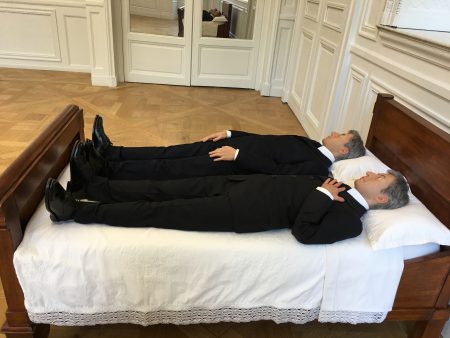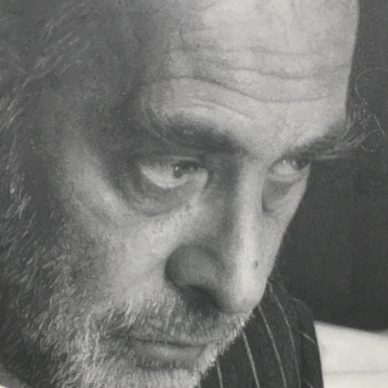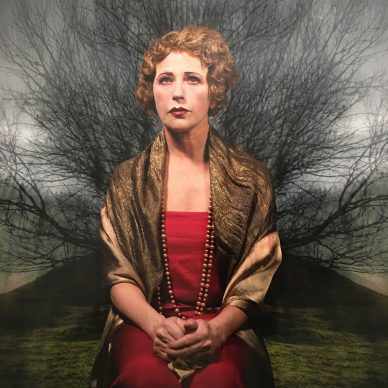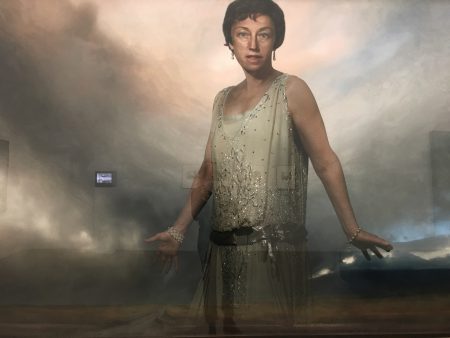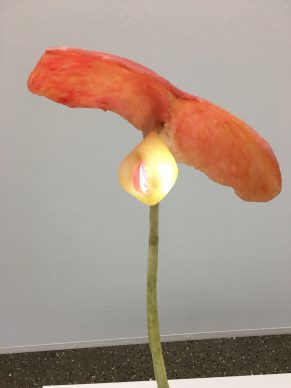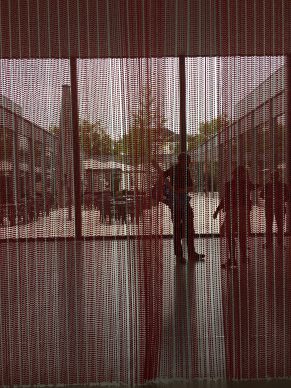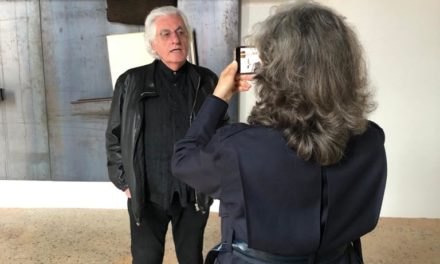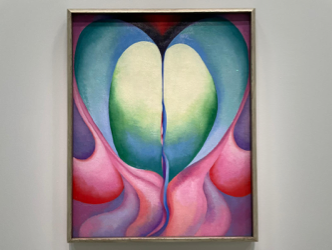The Anglo-Indian writer Salman Rushdie, in Midnight’s Children,the book which launched his career, tells the fascinating story of a young Indian doctor who is summoned each week to the bedside of a young woman who he examines through a perforated sheet, allowing him to see a single part of her body – the part affected by that week’s new illness. On one occasion it’s an arm, another time a cheek, and one time it’s her bottom… He will end up marrying her and finally embrace the entirety of the woman’s anatomy that has been so desired precisely because of the mystery shrouding it.
The giant collection belonging to French businessman François Pinault is also unveiled piece by piece in Venice each year through shows at the Palazzo Grassi or and at Punta della Dogana and from time to time in other venues before his highly anticipated space, right in the heart of Paris, in the Bourse du Commerce, opens in 2018.
In the meantime, you’ll have to make your way to Essen in Germany, the heart of the former mining basin, to catch a new portion of the Pinault Collection (78 works, 37 never exhibited before) in dialogue with the Folkwang Museum collection. The museum was founded by Karl Ernst Osthaus, a collector and enlightened industrialist who died in 1920 and sought to educate the masses through his Gauguins, Van Goghs and other German expressionists.
This time around it’s the French collector who is the guest of the German industrialist.
Tobia Bezzola, the museum’s director, speaks about the genesis of the project.
The curator, Pinault Foundation director Martin Bethenod (dont’t forget to watch his video at the end of the post), has pulled together a subtle and genuinely thematic exhibition on the subject of artists and the ways they employ their own image.
Martin Bethenod has created a thematic exhibition that knowingly sidelines most of the ‘big names’ known to feature in the collection. No Koons, Hirst or Murikami…
It’s at once a subtle and an intellectual exhibition on the way artists have used their own image. ‘It is not about exploring the question of narcissism. Here the body of the artist and his face are actually instruments in his work,’ explains the curator.
We encounter unexpected names in the Pinault collection such as Brazil’s Paulo Nazareth (born 1977) who embarks on a sort of via crucis of the global citizen between Brazil and the United States with neither visa or material possessions. A series of photos show his sufferings, his encounters and his demands.
The show’s credits also include the American Latoya Ruby Frazier (born in 1982) who explores intimacy in the place where she was born, Braddock, a steel town hit by unemployment.
And the Swiss Urs Lüthi (born 1947) cross-dresses in various characters as Claude Cahun (1894-1954) did before and in a different way.
The show opens with an impressive piece by the Italian artist Alighiero Boetti (1940-1994) made shortly before he died of brain cancer. He represents himself in a life-size metal piece, armed with a jet of water, which he uses to perpetually spray his head, causing an emanation of steam. It is overheated – an elegant allegory for his fatal illness.
One of the most prominent artists currently exploring this genre is the American, Cindy Sherman (born 1954). From the late ’70s she’s shot films and later photographs that tell stories through just one person: herself. Cindy Sherman applies make-up, uses costumes, assumes disguises… The most recent series, her large photos of upper middle class New York women who she caricatures, resembles a perfect exercise in self-parody.
The Italian conceptual artist based in New York these days, Rudolf Stingel (born 1956), has punctuated his highly intellectual creative trajectory with a few hyper-realist self-portraits. Time has left its mark on his face. Vanity of vanities… He appears to be quoting Ecclesiastes in this exercise in self-representation.
The excellent Canadian artist Rodney Graham (born 1949) has made a short period film in which he plays two roles at the same time. He’s the rich man in immaculate red boots and the poor man who is on the receiving end of a violent kicking. And again. Rodney Graham seems to be caught between the desire for success and the arrogance that tends to go with it, and the desire to be like everyone else.
It could well be argued that American Nan Goldin (born 1953) invented the genre of the unflattering photographic self-portrait. She chronicled her youth, loves, drugs, and death in underground venues. A scored face, tears, and suffering: the photos showing in series spare nothing.
There’s however one media-friendly ‘star’ in this exhibition. The tongue-in-cheek Italian artist, Maurizio Cattelan (born 1960), who is these days based in New York, often depicts himself in his work. Here he revisits a photo of the English pair Gilbert & George to create an installation in which he and his double sleep in the same bed. Does he say that we are our own best friends? Or is Cattelan saying that he is only capable of loving himself?
How can you maintain your artistic responsibility? How to be well-known without being an object of self contempt?
These are the questions that the artists seem to be asking in this show.
Consciousness is the main subject.
By way of conclusion, Martin Bethenod takes up Cattelan‘s point to describe the exhibition’s core idea
Support independent news on art.
Your contribution : Make a monthly commitment to support JB Reports or a one off contribution as and when you feel like it. Choose the option that suits you best.
Need to cancel a recurring donation? Please go here.
The donation is considered to be a subscription for a fee set by the donor and for a duration also set by the donor.

